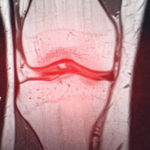SAN DIEGO—The Accelerating Medicines Partnership (AMP) is a public-private collaboration involving the National Institutes of Health (NIH), the U.S. Food & Drug Administration (FDA), multiple biopharmaceutical and life science companies, and nonprofit organizations, all joined together with the goal of transforming diagnosis and treatments for a multitude of diseases. One such condition that has been the focus of AMP is rheumatoid arthritis (RA). Thus, Reconstructing Rheumatoid Arthritis Through Space and Time: New Insights into RA Pathology from the AMP RA/SLE Consortium provided tremendous insight into the revolution taking place in this space.
Cell-Type Abundance Phenotypes

Deepak Rao, MD, PhD
The first speaker in the session was Deepak Rao, MD, PhD, assistant professor of medicine, co-director, Center for Cellular Profiling, Brigham and Women’s Hospital, Harvard Medical School, Boston. Dr. Rao (like the other speakers in the session) referenced a recent landmark article in the journal Nature. In this study, Zhang and colleagues used multi-modal single-cell RNA sequencing (scRNAseq) and surface protein data coupled with synovial tissue histology to construct an RA single-cell atlas of more than 300,000 cells. Tissues were stratified into six groups called cell-type abundance phenotypes (CTAPs), with each CTAP being characterized by selectively enriched cell states.1
The innovative concept of CTAPs is what makes this paper groundbreaking because these categories are each associated with different groups of risk genes, histological findings and serologic findings; these CTAPs may also be capable of predicting treatment response. Thus, using CTAPs to identify individual synovial phenotypes within RA may help clinicians and researchers to better understand individual groups of patients within the larger category of RA, and this data may ultimately help to identify novel treatment targets.
Dr. Rao described some of his own group’s work to further these concepts. Because RA is a disease initiated by antigen-specific T and B cells, Dunlap and colleagues applied scRNAseq and repertoire sequencing on synovial tissue and peripheral blood samples from 12 patients with seropositive RA. This allowed for identification of three distinct CD4 T cell populations that are prominent in the RA synovium: 1) T peripheral helper (Tph) and T follicular helper (Tfh) cells; 2) CCL5+ T cells; and 3) T regulatory cells (Tregs). Among B cells, it was specifically non-naive B cells (e.g., age-associated B cells, NR4A1+ activated B cells, and plasma cells) that were enriched in synovial tissue.
The key findings from this study were that 1) activated B cell populations are enriched in RA synovium; 2) there is evidence of clonal expansion and sharing between different B cell states; and 3) there appears to be a link between clonally expanded T cell populations and synovial tissue expanded B cells. The implications of these conclusions are that scientists can now better appreciate the altered cell state composition and clonal characteristics that maintain synovial inflammation in RA.2
The Epigenetics of Synovitis

Kathryn Weinand, PhD candidate, Raychaudhuri Lab
The second speaker in the session, Kathryn Weinand, PhD candidate, Raychaudhuri Lab, Harvard Medical School, Boston, she spoke on the subject of the epigenetics of synovitis. Ms. Weinand began with a discussion of the basics of transcription, the process by which a strand of DNA is copied into a new molecule in the form of messenger RNA (mRNA). The process of transcription is carried out by the enzyme RNA polymerase and accessory proteins called transcription factors (together, these form the transcription initiation complex). Enhancer and promoter sequences are regions of DNA to which transcription factors can bind and, thus, these sequences help direct where transcription should begin. One essential aspect of this process is that genes must be in accessible chromatin (AKA open chromatin) in order to be transcribed.
Ms. Weinand noted that, although genome-wide association studies (GWAS) have identified many variants that appear to have possible associations with rheumatoid arthritis, about 90% of these GWAS variants are located in non-coding genome regions and, thus, do not directly affect the coding sequence of a gene. Rather, these variants can accumulate in DNA regulatory elements, interfere with binding sites for transcription factors, and thus regulate gene expression levels in a cell type-specific manner.3
While earlier work from researchers like Dr. Rao have identified the important cell populations present and expanded in RA tissue inflammation, Ms. Weinand and colleagues have sought to investigate the chromatin accessibility profiles that underlie these pathogenic synovial tissue cell states. She and her collaborators measured genome-wide open chromatin at single cell resolution from 30 synovial tissue samples; 12 of these samples also had transcriptional data in multimodal experiments. The team was able to define 24 chromatin classes across 5 broad cell types and, by integrating a RA tissue transcriptional atlas into their analysis, they found that chromatin classes represent what they termed “superstates” that correspond to multiple transcription cell states.
Ms. Weinand explained how understanding this relationship between transcriptional cell state and chromatin class can have implications for therapies in rheumatoid arthritis. For example, treatment with rituximab, a B cell-depleting antibody, is meant to result in the deletion of a pathogenic cell (i.e., the B cell). However, if one chromatin class corresponds to multiple transcriptional cell states, then deleting just one pathogenic cell population may not be effective since other non-pathogenic transcriptional cell states can transition into that same pathogenic cell state given that the overall tissue environment remains the same. Therefore, altering the tissue environment or removing exogenous factors, such as transcription factors and cytokines, may prove more effective.4 Understanding these upstream and downstream effects thus may hold great promise in more successfully treating RA in many patients.
Imaging

Andrew Filer, PhD
The final speaker in the session, Andrew Filer, FRCP, PhD, professor of translational and experimental rheumatology, University of Birmingham, U.K., spoke on the subject of imaging of RA synovium in order to better understand the cellular architecture of synovitis. Referring back to the concept of CTAPs, Dr. Filer pointed out that, using low dimension stains from synovial tissue, two things can be shown: 1) what is happening in the CTAPs in terms of cell types can be replicated with histology and 2) consistent findings can be seen in the same joint when comparing disaggregated synovial tissue and four to six tissue samples that have been biopsied and stained.
The main thrust of the work from Dr. Filer and colleagues has to do with the concept of obtaining synovial tissue biopsies and projecting cell clusters onto the tissue space. In doing so, it has been possible to demonstrate that there is diversity within the RA synovium (and that this diversity has spatial and regional correlates) and that T and B cell CTAPs and the myeloid cell CTAPs differ in their macrophage/lymphocyte niches. These findings may have important implications for treatment targets for patients who fall into different CTAP groups.
In Sum
The session was notably innovative and represents the cutting edge when it comes to better understanding and, ultimately, treating conditions like RA using advanced technologies for investigation. With such a granular understanding disease, rheumatologists may one day be able to tell patients how their condition can be impacted even at most microscopic level.
 Jason Liebowitz, MD, is an assistant professor of medicine in the Division of Rheumatology at Columbia University Vagelos College of Physicians and Surgeons, New York.
Jason Liebowitz, MD, is an assistant professor of medicine in the Division of Rheumatology at Columbia University Vagelos College of Physicians and Surgeons, New York.
References
- Zhang F, Jonsson AH, Nathan A, et al. Deconstruction of rheumatoid arthritis synovium defines inflammatory subtypes. Nature. 2023;623(7987):616–624.
- Dunlap G, Wagner A, Meednu N, et al; Accelerating Medicines Partnership Program: Rheumatoid Arthritis and Systemic Lupus Erythematosus (AMP RA/SLE) Network, et al. Clonal associations of lymphocyte subsets and functional states revealed by single cell antigen receptor profiling of T and B cells in rheumatoid arthritis synovium. bioRxiv [Preprint]. 2023 Mar 21:2023.03.18.533282.
- Kozlowska J, Humphryes-Kirilov N, Pavlovets A, et al. New genetic insights in rheumatoid arthritis using taxonomy3, a novel method for analysing human genetic data. medRxiv [Preprint]. 2023 Feb 21:2023.02.21.23286176.
- Weinand K, Sakaue S, Nathan A, et al; Accelerating Medicines Partnership Program: Rheumatoid Arthritis and Systemic Lupus Erythematosus (AMP RA/SLE) Network; et al. The chromatin landscape of pathogenic transcriptional cell states in rheumatoid arthritis. bioRxiv [Preprint]. 2023 Apr 8:2023.04.07.536026.
